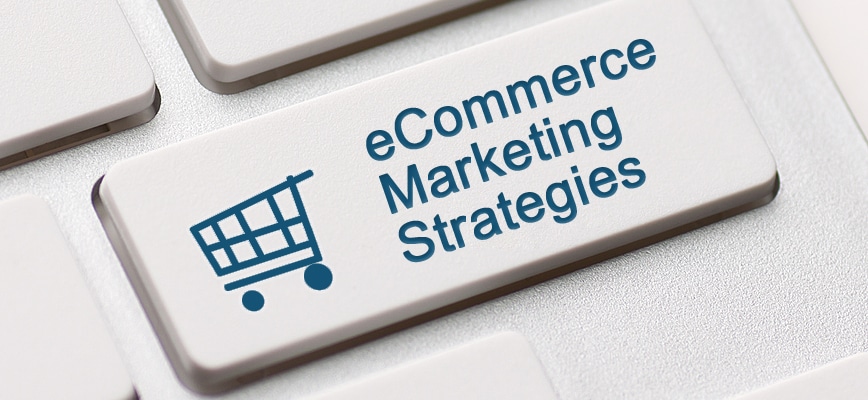Can’t you simply price your products based on their costs and target profit margins? What could go wrong if you ignored competitor prices?
Few people would visit your store, and even fewer would buy anything. To put it another way, you’d lose sales. We understand that competitive pricing may appear perplexing, but it serves the needs of online retailers.
If you’re ready, let’s define competitive pricing and analysis and also discuss the benefits and drawbacks of the strategy.
What is a Competitive Pricing Strategy?
A competitive pricing strategy is a pricing policy that uses the prices of competitors as a benchmark for setting prices. This strategy is also known as “competition-based” or “competitor-based” pricing. In most cases, businesses adopt a competitive pricing strategy after determining that a cost-plus approach is no longer viable.
What is a Competitive Pricing Analysis?
Competitive pricing analysis is an assessment of consumers’ reactions to new prices through research based on historical data or polling. So, typically, price analysis examines customers’ reactions to a price without taking into account the business’s costs or potential profits.
What Is the Importance of a Competitive Pricing Strategy in Pricing Analysis?
According to Forrester Consulting, 81% of buyers compare offers from multiple stores in search of a better deal. Retailers who can collect and analyze market data, map their position against competitors, and offer competitive prices are the first to catch these buyers’ attention.
Competitive pricing is a pricing technique that assists companies in attracting more consumers by maximizing rates using competitor products and pricing data. Hence, an effective pricing strategy will dramatically increase sales, improve supplier cooperation, and increase revenue.
Implementing a Competitive Pricing Analysis
#1. Determine the Data Quality
In order to evaluate competitors, we need complete and accurate data. We polled our clients from various countries to determine the following criteria as essential to high-quality data:
- The breadth of the contrasts.
Color, technological features, and other product attributes are critical for high-quality data and are not available on product cards, so retailers must consider anything.
- Error rate expressed as a percentage.
The majority of data matching is automated, and as a result, it is vulnerable to error. So, manual comparison improves the accuracy of the automated solution and guarantees better performance.
- The proportion of planned to delivered data.
Data may be insufficient because the algorithm may be missing information that is not available on the competitor’s website. This means that the amount of data predicted prior to collection will be greater than the amount of usable data delivered.
- Data that is constantly being changed.
Retailers could use the information gathered no later than two hours before repricing.
Time for data delivery To improve the effectiveness of comparative analysis, product and pricing data should be provided to the retailer’s internal system every 20–30 minutes.
#2. Specify Data Parameters
Following that, the organization must assess the critical parameters of competitive data that it needs to obtain and evaluate for its pricing process. Here are a few examples of the types of parameters that are normally monitored:
- The Price Index.
This shows the retailer’s market share for a specific product or class of products over a specific time span. Hence, the price index illustrates how market conditions influence sales and provides information on prices listed by competitors.
- Promotional activity of competitors
According to the same Forrester Consulting report, at least one-third of customers look for discounts before purchasing an item. This means that it is important to constantly track the discounts and sales of those in the industry in order to maximize promotional offers.
- Product accessibility.
Retailers may change their prices based on the availability of an item or class of products on the market at a given point in time by tracking competitors and their commodity stocks.
Many retailers believe that sustainable pricing is solely based on peer-group research. However, competitive price analysis necessitates a detailed examination of internal company data (i.e., historical data) as well as data about rivals. Without a thorough understanding of the market and your role as a retailer, it is difficult to set optimum prices and thrive with competition-driven pricing.
The parameters mentioned above are just a small portion of the data that retailers can track. You can track any type of data, such as stock levels, sales volumes, eCommerce traffic, promotions, and so on, depending on your business goals and the reasoning and rules you use when repricing.
#3. Competitors should be classified.
Once a retailer has comprehensive data on their rivals, the retailer must identify them based on a variety of criteria, including but not limited to target demographics and product quality. Market competition can be classified into three broad categories:
- Primary rivals are those that compete directly for the same buyer group.
- Secondary rivals that specialize in upscale/downscale versions of the retailer’s inventory. Analyzing secondary level rivals enables companies to gain a more comprehensive understanding of their market position and, as a result, improve their competitive skills.
- Tertiary businesses that offer goods that are indirectly related to those of the retailer. Analyzing this degree of rivalry benefits retailers looking to increase their product offerings.
Categorizing rivals reduces the time required for market research and enables retailers to steer their efforts in the right direction in terms of competition.
When identifying and categorizing rivals, a data-driven approach may also be used. You may be able to manually categorize rivals if you are a mono-brand retailer or sell a very small number of SKUs. However, for large sellers with thousands of products available across multiple pricing zones, smart competitor analysis is the only option.
Aside from that, the competitive landscape for each product is changing as other retailers adjust their strategies and new players enter the market. That is, competitive analysis and categorization are ongoing processes that should be performed on a regular basis depending on the product type or market segment.
To meet this need, Competera provides a ‘True competitors’ module, which allows retailers to determine the true impact each player has on specific SKU sales by analyzing retailer and also competitive historical data.
#4. Use Machine-Based Pricing Tools to Conduct a Competitive Pricing Analysis
Algorithms are increasingly being used by modern retail companies to collect and analyze data. So, machines have several advantages over manual methods:
- Increased precision
- Can handle vast volumes of complicated data
- Delivery timetable
- Make specific pricing recommendations.
The most important aspect of incorporating automation into the pricing process, in my opinion, is that it enables retail teams to shift from routine tasks to strategic tasks involving pricing strategy and price management.
Basically, retailers are concerned about the additional costs associated with the introduction of automated pricing systems. The truth is that these solutions are merely cost-cutting measures. Wiggle CRC, for example, not only cut repricing time in half but also gained a comprehensive view of the market at a lower cost. The latter was accomplished primarily by monitoring marketplaces rather than competitors’ websites.
#5. Monitor your competitors’ online activity.
Retailers should keep an eye on their competitors and their platforms, such as official websites and social media accounts, to gain a better understanding of the market. Several factors must be considered by businesses:
- Product Specifications
- Display of visuals
- Social networking use
- If the websites and social media pages are sensitive to mobile devices
- Options for customer service and reviews
- The rate of response
Moreover, retailers can also sign up for official updates and track their rivals on social media. Businesses must consider what draws customers to the goods of their rivals.
There are also a few examples of how open source knowledge can help retailers. Furthermore, the more key points they discover and evaluate, the more accurate their knowledge would be for making critical pricing decisions.
Competitive Pricing Advantages And Disadvantages
Competitive pricing strategies have advantages and disadvantages. These include the following;
Competitive Pricing Advantages
#1. Low Risk
The risk involved in this pricing strategy is relatively low. This is because the price setters are big organizations that carry out relevant research before setting their price.
#2. Relatively Simple
In addition to its low-risk advantage, it is also very simple to imbibe. All you have to do is wait for the price setters to set the price and then, you take it up from there.
#3. Involves The Use Of Other Pricing Strategies
Competitive pricing strategies can be used with other pricing strategies for a more robust output.
Competitive Pricing Disadvantages
#1. Inability To Break Even
Generally, the price setters are big companies with brand loyalty. When you keep following their lead, you may not be able to break even and this is not good for business brands.
#2. Untested And Unsustainable Strategies
Mostly, business brands just follow the lead price without verifying the set price. Unverified strategies may be harmful and pose a potential threat to your business brand.
How does competitive pricing affect customer loyalty?
Competitive pricing can positively impact customer loyalty by offering value for money; if prices are consistently lowered, customers may become price-sensitive and switch to lower-priced competitors.
How does competitive pricing affect brand image?
Competitive pricing can positively impact brand image by demonstrating value to customers; if prices are lowered too much, it may also hurt the brand’s reputation by making it appear cheap or of lower quality.
Can competitive pricing increase profits?
Competitive pricing can increase profits if done correctly, as it can attract more customers and increase sales. However, lowering prices too much can lead to decreased profit margins.
How do I set prices for new products?
When setting prices for new products, consider the target market, production costs, and the prices of similar products. Analyze competitors’ pricing strategies, and use market research to gauge customer willingness to pay.
How to use data and technology to support competitive pricing?
Data and technology can be used to gather information on competitor prices, market trends, and customer behavior. This information can help inform pricing decisions and ensure that prices remain competitive.
How to stay ahead of the competition in pricing strategies?
To stay ahead of the competition, companies can regularly review their pricing strategies and make adjustments based on market trends and customer behavior. They can also consider different pricing models, such as dynamic pricing, and use technology to gather and analyze data.
What are the legal considerations for competitive pricing?
In some countries, there are laws against price fixing, which restricts companies from colluding on prices. It is important for companies to comply with these laws and ensure that their pricing strategies are fair and not anti-competitive.
Summary
Developing a strategic pricing strategy from scratch is a difficult task. Many data-related variables, such as parameters and consistency, must be carefully considered. As a result, companies must determine whether and to what degree they can use automation in their pricing process. Finally, to truly excel in the industry, they must extensively research their rivals to gain a deeper understanding of their position in it.
Competitive Pricing FAQs
How do you use competitive pricing?
To practice competitive pricing, determine what other businesses are asking for the same goods or services, and set prices accordingly. You have the freedom to set prices above, below, or equal to those of competing businesses. But first, you’ll want to understand the pros and cons of each competitive pricing strategy
How does competitive pricing affect consumers?
How does competitive pricing affect consumers? It can lower the prices for consumers and tell consumers that it’s a good time to buy. … Consumers substitute goods with other similar goods like substituting margarine for butter.
How does competition lower prices?
The competing companies are often forced to follow suit and lower the prices of their products as well. As a result, the number of sales for the products increases, but each product is sold for a lower price–potentially leading to lower profits in the short term.
What is competitive pricing example?
Competitive pricing consists of setting the price at the same level as one’s competitors. … For example, a firm needs to price a new coffee maker. The firm’s competitors sell it at $25, and the company considers that the best price for the new coffee maker is $25. It decides to set this very price on their own product.






